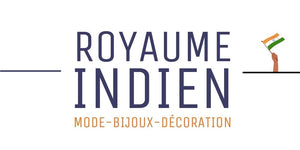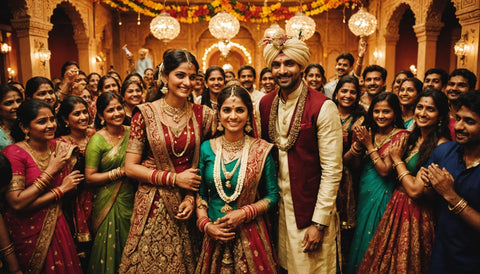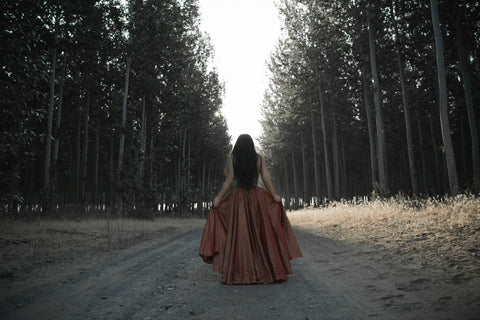
The symbol of Hindu love
of reading
Hinduism is one of the ancient religions of the world that has many Indian symbols conveying many meanings. It is observed for example by seeing the many Hindus tattoos existing.
One of the most powerful symbols of this crowd is the "AUM". When sung, written or painted, the At M frees its energy into the environment.
The vibrations that are emitted by singing aum are high frequencies and can create a harmony between the mind, the body and the soul.
But is the AUM the Hindu symbol of love?

Is there a Hindu symbol of love?
AUM is one of many categories and sections of Hinduism.
Exactly as in Buddhism and other Asian religions and cultures, Hindus have numerous symbols to represent their emotions and their myths.
No temple or religious center is complete without symbol, and Vedic gurus explained the benefits of AUM song in a very elaborate way in their writings.
Aum is also used as a tool for meditation by many spiritual gurus, and people are aiming every day at home to create a balance in their bodies.

What does the sound "Aum" mean?
Yoga is very often associated with this symbol, since yoga sessions begin and end with the song of "Aum".
At M is considered the sacred symbol of Hinduism. Each religion has its symbols and their respective meanings.
Similarly, Hinduism is associated with many symbols that convey the meaning and Power of love, power, wealth, luck and prosperity.
Aum is the root of everything because it has its connection with cosmic energy. It frees enormous amounts of blockages and increases positivity and optimism in an individual and yet, Aum is not the Hindu symbol of love.

Apart from Aum, there are many other symbols in Hinduism, and we have done our best to give you complete information about these symbols and their meaning.
Meditation, singing or even the creation of artistic pieces like mandalas can help free the spiritual side of a person.
What is the symbol of love in Hinduism?
We must understand that each symbol is unique and has its own meaning. In Hinduism, there is no specific symbol for Love. When we consider love a spiritual point of view, the heart chakra is open, and this happens through healing and mediation.
Since there are different means and methods of meditation to open the Anahata or the heart chakra, the use of symbols is not limited.
We can focus on this chakra and chant Aum or other symbol as the swastika, Lotus, etc ..
The only way to find and radiate love is to open the heart chakra, and the only way to do it is meditation.

Who is the Hindu God of Love?
According to legends, it's Kama Deva or Manmatha, which is the Hindu God of love. Kama translates Love or lust, as the context and circumstances. Manmatha represents the Hindu symbol of love in general.
However, there are some subtleties and challenges. The use of the word "Kama" is quite debatable. The Lord Ardhanareeshwara is considered by some as a symbol of true love.
Lord Shiva, in unison with his counterpart Parvati, is also considered one of the true symbols of love, respect and equality of others.

Symbols & Gods Related to Love
In addition to this, there are many symbols of this type that we should get to know. There are several Hindu gods asked to invoke feelings of love.
Sri Chakra Yantra or Sri
Sri Chakra Where Sri Yantra is a Hindu symbols most used. Many people even Sri Yantra mandala and practice meditation. This symbol represents the union of male and female energies.
You can see 43 smaller triangles, which are considered the abodes of the respective deities. Sri Chakra can be drawn in 2D or 3D, and when drawn in 3D, it represents Mount Meru.
Mount Meru is a mountain that has a great importance in the cosmic entity, and it brings a lot of energy and good vibes to all that is connected to the Cosmos.
Mount Meru is in the center of the universe; therefore, a three-dimensional figure is considered much more powerful when it comes to spiritual journey.

The Trishul or Trident Hindu
the Trishul Where Trident is another popular Hindu symbol. Considered a weapon of Lord Shiva, the Trident shows unison trinity.
Brahma, Vishnu and Shiva, associated with the creation, preservation and destruction, are represented by the symbol.
In addition, trident pointed symbolically represent the desire, action and wisdom. When trying to connect the dots to spirituality, it shows us the link between perception, affection and conation.
There are many other connotations that can be inferred from the trident. It represents the three Gunas or characteristics in humans, Rajas, Tamas and Satvik. Therefore, the Trishul symbol in Hinduism is important.

The Peacock | Luck & Prosperity
Peacocks are another powerful representation of the luck and some prosperity. The peacock is the vehicle of Lord Muruga, and it is considered as God himself in the Indian subcontinent and also in East Asia regions through the mandala.
This bird has a unique voice, and seen dance in the rain, the wings open. This connects us quickly to prosperity, because the rain showers will bring great fortune to land.
According to Hindu mythology, the bird's feathers born Garuda, the carrier of Lord Vishnu; it is also represented in cycle time.

Shatkona or the Star Six Branches
The six-pointed star is another powerful Hindu symbol that can be seen in many religious and spiritual centers. This symbol is again the union of power and male and female energies.
While the upper triangle represents Shiva, the lower triangle represents Shakti. Thus, meditation on this symbol is also known to relax and calm the mind.
It also has the power to ignite your higher energies. The use of these symbols in religious institutions and spiritual is quite common.

The dhvaja | Flag of Temples
The flag is one of the most iconic symbols Hindus used in the Hindu religion. All the temples have a saffron colored flag hoisted atop the sanctum sanctorum main.
Since ancient times, saffron colored flag was used as a mark to represent the existence of temples.
The White Swan | Learning and Wisdom
White Swan is the vehicle of Saraswathi goddess. That is why Hinduism attaches great importance to this symbol.
You will find the mention of swans in the scriptures and the Hindu epics. The swan is synonymous with learning and wisdom.
It also symbolizes music and knowledge. The swan can also be considered as the representation of love because, according to the Nala Damayanti tale, it is the swan that united the king and his queen.
So, they are truly the messengers of love. Swans also represent the Hindu symbol of love and peace.

Tilaka | Front jewelry
This is one of the most common Hindu symbols that we meet in Hinduism. Everyone, especially pious people and associated with temples, have a tilaka on the forehead.
You can make a tilaka Using different materials, but the most popular uses sandalwood and vermilion. Some people apply it in the form of pulp and others in the form of powder between the eyebrows.
The Agnya Chakra or the Chakra of the Third Eye is the gateway to all the energies that penetrate inside our body. To protect his will have bad eyes and receive positive energies, men and women wear Tilaka.
There are different forms of tilakas. Also called "bindi" some like it's a straight line, others prefer three lines that look like the form of the trident.
The devotees of Vishnu and Shiva bear thebindis in their own way. In some parts of India, you will even find women with tilakas even though the meaning for the latter is more often linked to marriage.

Rudraksha | Shiva pearl
Rudraksha seeds Are one of the most popular and powerful pearls that are useful in the spiritual journey. People wishing to improve their spiritual learning will meditate on using Rudraksha.
The pure rudraksha seeds are quite expensive, and you can only find them in Nepal trees. Originally from the chains of the Himalayas, the Rudraksha is the favorite pearl of the Lord Shiva.
According to legends, the tears of the Lord's eyes gave birth to this tree; It represents the existence of the Lord Shiva. The people who follow Rudra (Lord Shiva), the saints, the wise and almost all spiritual gurus wear rudraksha pearls around the neck.
These rudrakshas provide many advantages. They can calm the mind and bring a lot of clarity. There is a strong belief that rudrakshas are the shortest way towards the love of God.

The elephant symbol
We all had to observe the face of Lord Ganesha. the elephant face Or the elephant itself is of paramount importance in Indian traditions and customs.
A strong belief that Lord Ganesha eliminates all obstacles exists in Hinduism. In addition, the elephant symbol is a lot of luck, prosperity and success.
We can also find elephants who keep the Goddess Lakshmi in his Incarnation Gaja Lakshmi. Most people keep idols of enormous elephants in front of their house to attract wealth and success.

Turtle | Chance & Longevity
You can assume that The turtle Improves longevity and brings a lot of luck. The turtle also represents one of the incarnations of Lord Vishnu, and it is also associated with the Goddess Lakshmi.
It is therefore one of the most common symbols of Hinduism. In most Hindu sanctuaries, the turtle symbol is engraved inside and on the exterior walls.

Conques | Divine instrument
You can find Conques in every home. The sound coming out of the conques is equal to the vibrations of AUM according to the holy books of Hinduism. Almost all Hindu gods can be seen holding conches in the Hindu religion.
Conquest exist in different shapes and sizes, and they emit sounds at different frequencies. If you take a look at our epics, people blow in conches to initiate something, and it symbolizes a good start.
She moves evil, and we can see Lord Krishna blowing in her conch to chase injustice. Similarly, when you look at the conch, it represents the whole cosmos again; People who meditate also use these conques widely.

Mass | Force courage
Although less important than the conch, the mass is another important symbol that shows the strength and ability to overcome its fears.
It is one of the weapons that Lord Vishnu uses in almost all his avatars and in his original form. Although there is no mass in the houses, it is very present in temples and other religious centers.


















